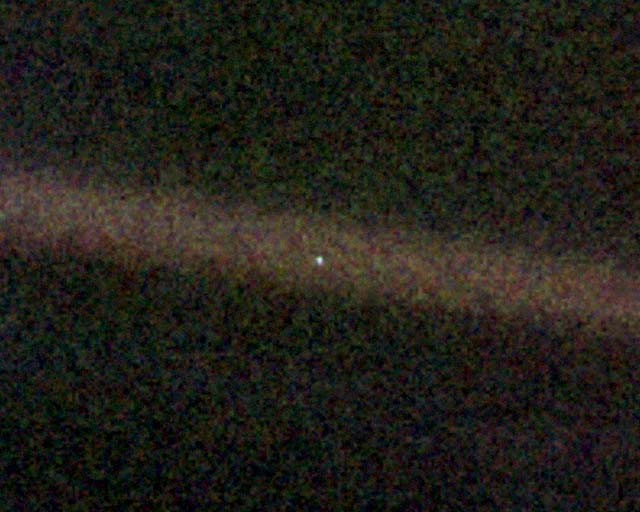

He suggests space exploration and colonization as a vision for developing anew meaning in life to replace that given historically by religion. In fact, he stresses that science has disproved the Bible and that man is an insignificant species on a remote planet whirling through the vast reaches of space. In it he presents the case that the earth and man are not at the center of the universe or God's attention.

I was puzzled at his enthusiasm until I purchased and read his book. I introduced myself and found him very cordial but extremely animated and energetic in attempting to convince me that the Bible is not a valid source of truth and that science has proven it wrong.

1Įarlier in the day I had the opportunity to briefly talk with him during a break in presentations at the fall meeting of the American Geophysical Union. "There is perhaps no better demonstration of the folly of human conceits than this distant image of our tiny world," Sagan wrote in his book, appropriately titled "The Pale Blue Dot." "To me, it underscores our responsibility to deal more kindly with one another, and to preserve and cherish the pale blue dot, the only home we've ever known.On December 6, 1994, Carl Sagan, author of Cosmos, well-known astronomer and speaker, appeared before the Commonwealth Club of California in San Francisco to introduce his new book, Pale Blue Dot. The image and its title were the brainchildren of the planetary scientist Carl Sagan, who was a member of the Voyager Imaging team. The "Pale Blue Dot" picture showed everyone on Earth just how small and fragile our world is from a perspective never seen before. Voyager 1 flew by Jupiter and Saturn, while Voyager 2 visited all four of the solar system's gas giants: Jupiter, Saturn, Uranus, and Neptune. The photo came from the Voyager 1 probe, which launched in 1977 along with its twin, Voyager 2. In the image, Earth is smaller than a pixel, almost hidden amid a wide swath of hazy sunlight. On February 14, 1990, a distant spacecraft nearly 4 billion miles from Earth snapped a now iconic portrait known as the "Pale Blue Dot." Account icon An icon in the shape of a person's head and shoulders.


 0 kommentar(er)
0 kommentar(er)
